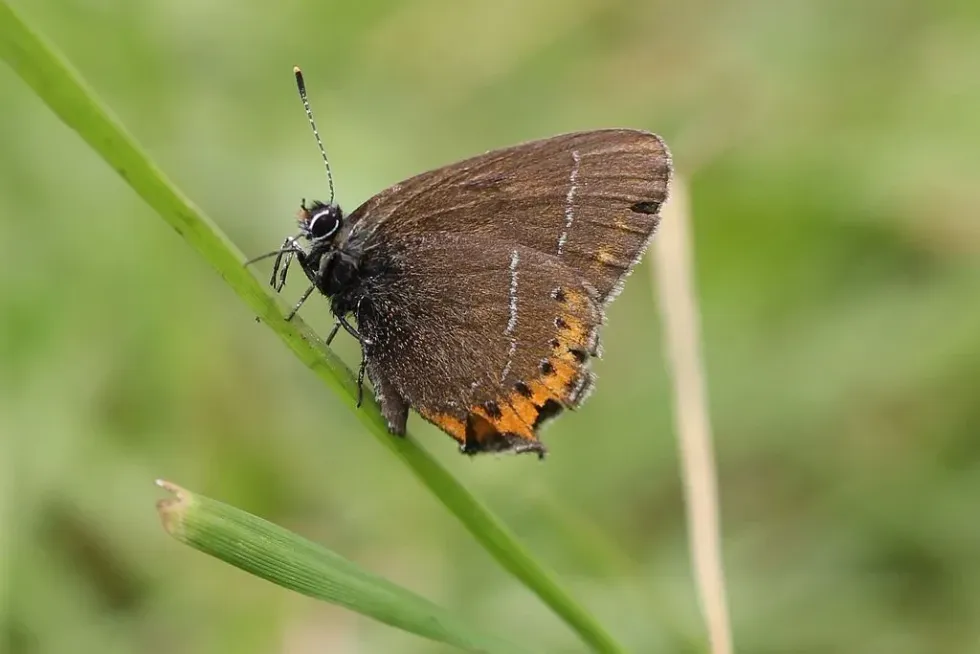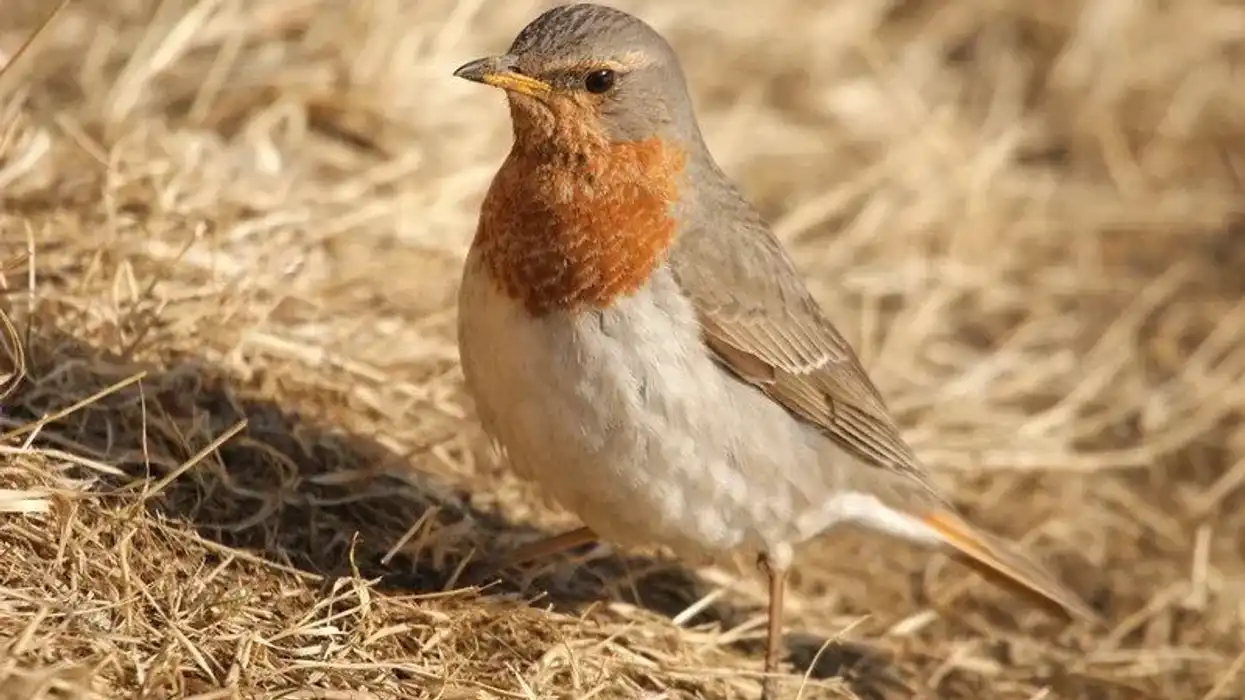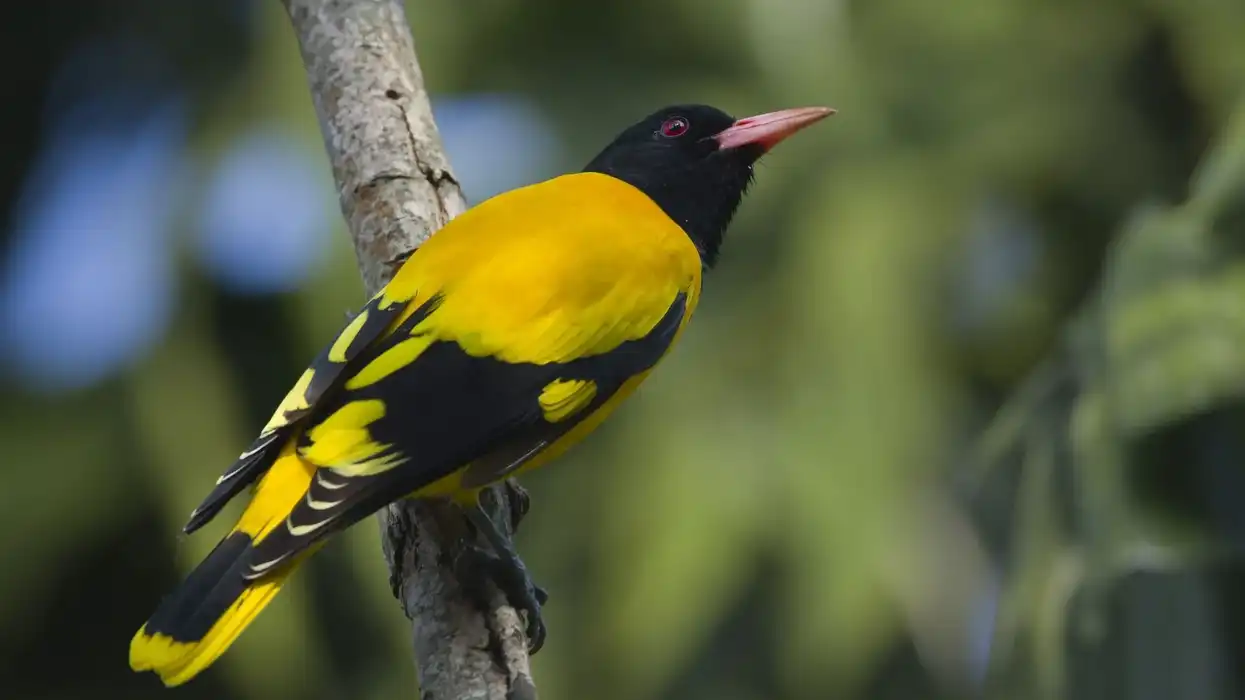Lycaenidae is the second-largest family of butterflies, after Nymphalidae, with over 6,000 species whose distribution occurs worldwide.
Approximately 30% of the recognized butterfly species belong to this family, which is further divided into seven subfamilies, including the coppers (Lycaenidae), the blues (Polyommatinae), the harvesters (Miletinae), and the hairstreaks (Theclinae).
This article is about a very special and beautiful species of hairstreak butterflies called the blue-black hairstreak, and it will tell you everything you need to know about this butterfly, including its distribution, habitat, conservation status, life cycle, breeding and feeding habits, colony sites, similar species, diet, life span, and population size!
The black hairstreak (Satyrium pruni) is a small to medium-sized butterfly belonging to the Lycaenidae family and is the genus of Satyrium.
It was introduced and described by Carl Linnaeus, a Swedish taxonomist in 1758.
The species is native to Europe but can be found in the east of Mongolia, Korea, and Japan as well. Its population size is considered to be stable but it continues to be UK's rarest hairstreak species, with only a handful of breeding colonies in east Midlands, in Peterborough, East of England.
They are often confused with the while-letter hairstreak species, here are some key points to help you identify black hairstreaks: a row of small orange spots on the brown upper wings, a row of black spots on the hindwings and the undersides, white edges, and red stripes, all of which are absent among the white-letter hairstreak butterflies.
Learn about some other arthropods from our red admiral butterfly facts and black witch moth facts pages.
Black Hairstreak Interesting Facts
What type of animal is a black hairstreak?
The black hairstreak (Satyrium pruni) is a butterfly belonging to the Animalia kingdom.
What class of animal does a black hairstreak belong to?
The black hairstreak (Satyrium pruni) belongs to the Insecta class, the phylum Arthropoda, and is the genus of Satyrium.
How many black hairstreaks are there in the world?
The accurate population size of this small blue and black hairstreak butterfly species is unknown.
Where does a black hairstreak live?
The black hairstreak distribution occurs throughout Central and South Europe- from England, East Sussex, Oxfordshire, Scandinavia to the Atlantic coast. It is rare and elusive in Great Britain and restricted to around 48-50 sites between the south and east Midlands of Oxford and Peterborough.
It is also found in Asia- East Mongolia, Korea, Japan. You can also find the green hairstreak in UK and Europe.
What is a black hairstreak's habitat?
The black hairstreak habitat includes dense, and mature blackthorn thickets, open areas. During the breeding, season eggs are deposited along wood edges, edges of rides and glades or hedgerow thickets
Who do black hairstreaks live with?
Black hairstreaks are solitary but are often spotted in pairs or small groups
How long does a black hairstreak live?
Black hairstreaks have a poor life span and live up to two to four weeks.
How do they reproduce?
The black hairstreak is a rare and elusive butterfly and has a unique life cycle which is made up of four stages, it begins its journey as an egg, grows into a larva (caterpillar), transforms into a pupa (chrysalis), and then finally emerges as an adult butterfly.
Its breeding colonies are restricted to open woodland areas and hedgerows containing blackthorn - the foodplant of the caterpillar larva.
The black hairstreak is pretty mobile and does not wander or travel a lot, thus you can find an entire colony confined to a single area along wood edges, scrub patches, and hedgerows.
These hairstreaks lay their eggs from early April till the end of May.
The eggs are usually deposited on blackthorn and plumtrees singly, or in pairs. A black hairstreak egg is quite flat, green-yellow, or grayish brown, with dark dorsal stripes along the sides of small brown tubercles.
The caterpillar spends the winter inside the egg, emerging a year later in spring which is at the end of April, right before the flower buds bloom, and later feeds on them, and freshly unfolded blackthorn leaves. It frequently attacks other caterpillar larvae which had fastened themselves before molting.
Older larvae are green and well camouflaged and mix with the leaves on which they feed.
Pupation takes place on healthy leaves or twigs starting in mid-Jun. The pupae are brown colored with black-white markings, to impersonate bird droppings, it is considered as a defensive tactic to avoid predators like lizards, toads, and snakes.
The adult butterfly of this species emerges towards the end of June to mid-July and is on the wing immediately. The largest breeding colony of the black hairstreak species in England is found near the Hamgreen Woods in Buckinghamshire.
Historically there have been around 90 known colonies since its discovery in 1828 but there have been many, mostly unsuccessful, introductions at various locations in southern England including one in Surrey in 1952 that seemed to be successful until the habitat was destroyed.
It is now one of the rarest butterflies in Great Britain. Some smaller colonies occur in shady locations such as canopy gaps in mature woodland, small scrub patches, or sheltered hedgerows.
What is their conservation status?
The IUCN Red List of Threatened Species has classified the black hairstreak butterfly as species of Least Concern.
Black Hairstreak Fun Facts
What do black hairstreaks look like?
Black hairstreaks are quite similar to the white-letter hairstreak (as it's active at the same time ) here are some details about its (black hairstreak) appearance: a black hairstreak butterfly is a small and elusive brown, blue-black butterfly.
The best way to distinguish between the two species is by paying close attention to its wings, as the upper side of its wings has a row of orange spots along the edges, the underside is similar to the white-letter hairstreak but the white stripes that cross the forewings are straighter, the hindwings display several black spots and a few red submarginal bands or stripes, carefully marked with a crescent moon-like edge.
Female black hairstreaks often have these black spots and orange-red stripes extending to their forewings.
Black hairstreak butterflies have a wingspan of about 1.4 in (3.7 cm). The black hairstreak butterfly larvae or caterpillars are short, broad, green-yellow, or brown, and resemble slugs.
They molt several times before they are fully mature, this process is also known as 'instars', they get a new look every time they shed their skin.
Mature caterpillars of the black hairstreak butterflies highly resemble blackthorn leaves because they feed on most of their life, which also proves to be a great camouflage.
The final molt takes place in late May or early June, after which they are fully grown and ready to pupate.
How cute are they?
Black hairstreak butterflies more than cute are beautiful because of their striking colors, and patterns.
How do they communicate?
These butterflies communicate with one another mostly through chemical cues and scents, the males produce chemicals called pheromones to attract females.
How big is a black hairstreak?
Black hairstreak butterflies grow about 0.7-1.5 in (1.7-3.8 cm) in size and have a wingspan of about 1.4 in (3.7 cm). A tarantula spider is nearly seven times bigger than a black hairstreak.
How fast can a black hairstreak fly?
These butterflies make short flights in and out of treetops, flowering plants, and bushes during the day.
How much does a black hairstreak weigh?
Black hairstreaks weigh less than 1 oz (28 g).
What are the male and female names of the species?
There are no separate names give to the male and female members of this species. They are denoted as males and females themselves.
What would you call a baby black hairstreak?
The caterpillar that comes out of a hairstreak egg is called a larva.
What do they eat?
Black hairstreaks spend most of their time in canopies and feed on honeydew secreted by aphids, and forage only above the ground. New born caterpillars mainly feed on the blackthorn foodplant. Their diet is similar to the crowned hairstreak species.
Chameleons, lizards, and birds often prey on them.
Are they poisonous?
No, unlike the monarch butterfly, the black hairstreaks are not poisonous.
Would they make a good pet?
The caterpillars make good pets for a short time (two to three weeks), however, full-grown butterflies do not make good pets as they need space for flying and they must be able to find fresh nectar from plants of a specific kind.
Did you know...
This species never rests with its wings open.
In the UK alone there are about 60 species of beautiful, and colorful butterflies.
How did the black hairstreak get its name?
This species got its name because of the beautiful, and fine hair-like strokes on the butterfly's wings.
Is the black hairstreak endangered?
No, it's not, the population size of the black hairstreak is stable.
Here at Kidadl, we have carefully created lots of interesting family-friendly animal facts for everyone to discover! Learn more about some other arthropods from our queen butterfly facts and viceroy butterfly facts pages.
You can even occupy yourself at home by coloring in one of our free printable black hairstreak coloring pages.









